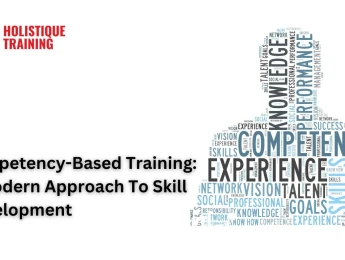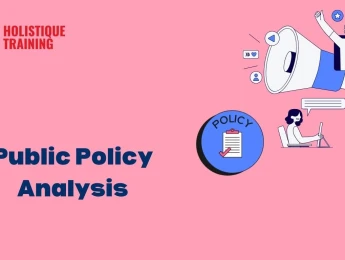- Table of Contents
- Introduction
- What is the Strategic Alignment Model?
- Definition
- History
- Purpose
- Key Elements of the Strategic Alignment Model
- Market System
- Business System
- Organisational System
- Why Is the Strategic Alignment Model Important?
- Enhanced Performance
- Better Decision-Making
- Resource Optimisation
- Risk Management
- Strategic Agility
- Facilitates Innovation
- Enhances Stakeholder Communication
- Supports Long-Term Sustainability
- The Four Components of a Strategic Alignment Model
- Business Strategy
- IT Strategy
- Organisational Infrastructure
- IT Infrastructure
- How to Leverage the Strategic Alignment Model
- Assess Current Alignment
- Define Strategic Objectives
- Develop a Roadmap
- Implement Governance Frameworks
- Foster Collaboration
- Monitor and Adjust
- Example of Using a Strategic Alignment Model
- Step 1: Assess Current Alignment
- Step 2: Define Strategic Objectives
- Step 3: Develop a Roadmap
- Step 4: Implement Governance Frameworks
- Step 5: Foster Collaboration
- Step 6: Monitor and Adjust
- Conclusion
Introduction
Strategic alignment is a concept that emphasises the harmony between business objectives and IT capabilities to ensure the successful execution of business strategies. One of the most influential frameworks in this domain is the Strategic Alignment Model (SAM). This concept has gained prominence due to its effectiveness in aligning IT resources with business goals. In this blog post, we will explore the definition, history, and purpose of the SAM, its key elements, importance, four main components, and how to leverage it effectively. We will also provide an example of its application in a real-world scenario.
What is the Strategic Alignment Model?
Definition
The Strategic Alignment Model (SAM) is a framework that guides organisations in aligning their IT strategy with their business strategy. The model emphasises the importance of ensuring that IT initiatives support business objectives, thereby enhancing overall organisational performance.
History
The concept of strategic alignment was first introduced in the 1980s and gained widespread recognition with the work of Henderson and Venkatraman in 1993. Their seminal paper laid the foundation for understanding the critical relationship between IT and business strategies. The SAM has since evolved and been adapted to various industries, reflecting changes in technology and business environments.
Purpose
The primary purpose of the SAM is to ensure that IT investments are in sync with business goals. This alignment helps organisations to leverage technology effectively, driving innovation and competitive advantage. The model provides a structured approach to analysing and optimising the relationship between business and IT, enabling organisations to achieve higher levels of efficiency and effectiveness.
Key Elements of the Strategic Alignment Model
The Strategic Alignment Model (SAM) comprises several fundamental elements that provide a comprehensive framework for aligning IT with business strategies. These elements are the market system, the business system, and the organisational system. Each plays a crucial role in ensuring that IT initiatives are strategically aligned with business objectives, enhancing overall performance and competitiveness.
Market System
The market system encompasses the external environment in which an organisation operates. This includes market trends, customer needs, competitive pressures, and regulatory requirements. Understanding the market system is vital for aligning IT strategies with business goals, as it provides critical insights into external factors that can significantly influence business performance.
- Market Trends: Staying abreast of market trends allows organisations to anticipate changes and adapt their strategies accordingly. For instance, the rise of digital technologies and e-commerce has compelled many businesses to invest in robust IT infrastructures to remain competitive.
- Customer Needs: Aligning IT with business strategies involves ensuring that technology supports the delivery of superior customer experiences. Organisations can tailor their IT solutions to enhance customer satisfaction and loyalty by understanding customer needs and preferences.
- Competitive Pressures: Organisations must continuously monitor their competitors to stay ahead in the market. Strategic IT investments can provide a competitive edge by enabling more efficient operations, innovative products, or superior customer service.
- Regulatory Requirements: Compliance with industry regulations is a critical aspect of the market system. Aligning IT strategies with regulatory requirements ensures that organisations avoid legal pitfalls and maintain their reputation.
Source: Research Gate
Business System
The business system includes the internal processes, capabilities, and resources an organisation uses to achieve its objectives. This element is central to ensuring that IT initiatives support and enhance internal processes, improving efficiency and effectiveness.
- Operational Processes: These are the day-to-day activities that keep the organisation running. IT solutions should be designed to streamline these processes, reducing costs and improving productivity. For example, implementing an enterprise resource planning (ERP) system can integrate various organisational functions, enhancing coordination and efficiency.
- Organisational Structures: An organisation's structure can significantly impact its ability to align IT with business strategies. A flexible, adaptive structure allows for better integration of IT initiatives. For example, creating a Chief Information Officer (CIO) position ensures that IT strategy is represented at the executive level.
- Core Competencies: These unique strengths give an organisation a competitive advantage. Aligning IT with core competencies involves leveraging technology to enhance these strengths. For instance, a company known for its customer service might invest in advanced customer relationship management (CRM) systems to further improve its service quality.
Organisational System
The organisational system refers to the cultural, structural, and managerial aspects of an organisation. This includes leadership styles, decision-making processes, and organisational culture. Ensuring alignment between IT and the organisational system helps foster a culture of collaboration and innovation, which is essential for the successful implementation of IT initiatives.
- Leadership Styles: Effective leadership is crucial for aligning IT with business strategies. Leaders who understand IT's strategic importance can drive initiatives that support business objectives. Transformational leaders, for instance, can inspire and motivate employees to embrace new technologies and processes.
- Decision-Making Processes: How decisions are made within an organisation can impact the alignment of IT and business strategies. A collaborative decision-making process that includes input from both IT and business stakeholders ensures that technology investments are aligned with strategic goals.
- Organisational Culture: A culture that values innovation and continuous improvement supports the alignment of IT and business strategies. Organisations with a strong collaboration and knowledge-sharing culture are better positioned to leverage IT for strategic advantage. For example, fostering an agile development culture can help IT teams quickly adapt to changing business needs.
By focusing on these key elements—market, business, and organisational systems—organisations can ensure a holistic approach to aligning IT with business strategies. This alignment enhances operational efficiency and effectiveness and supports achieving strategic objectives, driving long-term growth and success.
Why Is the Strategic Alignment Model Important?
The importance of the SAM lies in its ability to bridge the gap between IT and business, ensuring that technology investments contribute to achieving business objectives. Here are several reasons why the SAM is critical for organisations:
Enhanced Performance
Aligning IT with business strategies directly contributes to enhanced organisational performance. When IT initiatives are strategically aligned, they optimise processes, reduce redundancies, and improve productivity across departments. This alignment ensures that technology investments are supportive and pivotal in achieving operational excellence and competitive advantage.
Better Decision-Making
According to McChrystal Group's survey , just 40% of employees felt that leadership distributed resources fairly. Here’s where this method comes in—the SAM facilitates informed decision-making by providing a structured framework for evaluating IT investments. Organisations can prioritise projects that significantly impact strategic objectives by aligning IT initiatives with business goals. This approach minimises the risk of investing in technologies not aligning with the organisation's long-term vision, ensuring that resources are allocated wisely.
Resource Optimisation
Strategic alignment helps organisations optimise resources—both financial and human. Organisations can maximise their technology expenditures' return on investment (ROI) by focusing IT investments on initiatives that directly support business strategies. This optimization extends beyond financial gains to include efficient use of human capital, as IT and business teams collaborate more effectively on shared goals.
Risk Management
Effective strategic alignment mitigates risks associated with IT investments. Organisations can anticipate and proactively address potential risks by aligning technology initiatives with business strategies. This proactive approach minimises disruptions to operations, enhances security measures, and ensures compliance with industry regulations. Ultimately, strategic alignment fosters a resilient organisational framework that adapts to evolving market dynamics and technological advancements.
Strategic Agility
In today's fast-paced business environment, organisations must adapt to change. The SAM enables organisations to pivot quickly in response to market shifts, competitive pressures, or internal restructuring. Organisations can capitalise on emerging opportunities and address challenges by maintaining alignment between IT and business strategies. This agility sustains competitive advantage and positions the organisation as an industry leader capable of driving innovation and growth.
Facilitates Innovation
Strategic alignment fosters a culture of innovation within organisations. Organisations can leverage technology to innovate products, services, and processes by aligning IT investments with business strategies. This alignment encourages cross-functional collaboration and knowledge sharing, empowering teams to explore new ideas and solutions. As a result, organisations can stay ahead of industry trends, differentiate themselves in the market, and drive continuous improvement.
Enhances Stakeholder Communication
Effective strategic alignment enhances communication and collaboration among stakeholders. By aligning IT with business strategies, organisations break down silos between departments and foster transparent communication channels. This alignment ensures that all stakeholders—from executives to frontline employees—understand the strategic objectives and how technology supports them. Improved communication facilitates smoother project execution, faster decision-making, and a unified organisational vision.
Supports Long-Term Sustainability
Strategic alignment contributes to organisations' long-term sustainability. Organisations create a sustainable growth and profitability roadmap by aligning IT initiatives with business goals. This alignment ensures that technology investments address immediate business needs and lay the foundation for future scalability and resilience. Organisations can adapt to changing market conditions, regulatory requirements, and technological advancements, positioning themselves as industry leaders with a sustainable competitive advantage.
Incorporating the SAM into organisational strategy enhances performance, decision-making, resource optimization, risk management, strategic agility, innovation, stakeholder communication, and long-term sustainability. These benefits underscore the SAM's role as a cornerstone for aligning IT with business strategies, driving organisational success in today's dynamic business landscape.
The Four Components of a Strategic Alignment Model
The Strategic Alignment Model (SAM) consists of four integral components forming a robust framework for aligning IT strategies with business objectives. These components encompass various aspects of organisational strategy and technology integration, ensuring a cohesive approach to achieving strategic alignment.
Business Strategy
The business strategy component focuses on defining the organisation's long-term goals and objectives. This includes identifying market opportunities, defining competitive positioning, and setting strategic priorities. Aligning IT with business strategy ensures technology investments support and enhance these overarching goals.
- Market Opportunities: Aligning IT with business strategy begins with identifying and capitalising on market opportunities. Organisations leverage IT to enter new markets, expand product offerings, or enhance customer engagement.
- Competitive Positioning: IT plays a crucial role in maintaining or improving competitive positioning. Aligning IT with business strategy helps organisations differentiate themselves in the market, whether through operational efficiency, customer experience enhancements, or innovation.
- Strategic Priorities: IT initiatives must align with the organisation's strategic priorities. For example, if growth through digital transformation is a strategic priority, IT investments may focus on developing e-commerce platforms, enhancing data analytics capabilities, or integrating IoT solutions.
IT Strategy
The IT strategy component outlines how technology will support and enable the achievement of business objectives. This includes defining technology roadmaps, prioritising IT investments, and aligning IT capabilities with organisational needs.
- Technology Roadmaps: IT strategy involves developing technology roadmaps that outline the deployment of IT resources over time. These roadmaps align with business goals and provide a clear path for technology implementation and evolution.
- IT Investments: Strategic alignment ensures that IT investments are aligned with business priorities and expected outcomes. Organisations prioritise projects that deliver the most value and contribute directly to achieving strategic objectives.
- Alignment with Organisational Needs: IT strategy must align closely with organisational needs and capabilities. This alignment ensures that IT solutions address specific business challenges, enhance operational efficiency, and support future growth initiatives.
Organisational Infrastructure
The organisational infrastructure component encompasses the structures, processes, and resources that support the implementation and operation of IT and business strategies. This includes governance frameworks, organisational culture, and human resources management.
- Governance Frameworks: Establishing effective governance frameworks ensures that IT and business strategies are aligned and well-coordinated. Governance frameworks define decision-making processes, roles, responsibilities, and accountability for IT initiatives.
- Organisational Culture: A supportive organisational culture is essential for successful strategic alignment. Cultures that value collaboration, innovation, and continuous improvement foster an environment where IT and business teams work together to achieve common goals.
- Human Resources Management: Aligning IT with business strategy requires skilled human resources capable of implementing and managing technology solutions. Organisations invest in talent development and retention to build a workforce that supports strategic IT initiatives.
IT Infrastructure
The IT infrastructure component comprises the hardware, software, networks, and data management systems that support the organisation's IT operations. This includes ensuring robust and reliable technology infrastructure to meet current and future business needs.
- Hardware and Software: Maintaining and upgrading hardware and software systems is essential for supporting business operations and enabling innovation. IT infrastructure investments focus on scalability, reliability, and security to meet organisational requirements.
- Networks and Connectivity: IT infrastructure includes networks and connectivity solutions that facilitate communication and data exchange between the organisation and external stakeholders. Secure and efficient networks support collaboration and enhance operational efficiency.
- Data Management Systems: Effective data management systems are critical for storing, processing, and analysing data to support decision-making and business insights. IT infrastructure investments in data management focus on scalability, data security, and compliance with regulatory requirements.
In short, the Strategic Alignment Model's four components—business strategy, IT strategy, organisational infrastructure, and IT infrastructure—provide a comprehensive framework for organisations to align their IT capabilities with strategic business objectives. Organisations can optimise resource allocation, enhance operational efficiency, foster innovation, and sustain competitive advantage in a rapidly evolving business landscape by focusing on these components. Strategic alignment ensures that IT investments contribute effectively to achieving long-term organisational success and resilience.
How to Leverage the Strategic Alignment Model
Leveraging the SAM effectively requires systematically aligning IT with business strategies. Here are several steps that organisations can take to leverage the SAM:
Assess Current Alignment
The first step in leveraging the SAM is to assess the current alignment between IT and business strategies. This assessment involves evaluating existing IT initiatives, identifying alignment gaps, and understanding how technology currently supports—or hinders—business goals. Organisations can pinpoint improvement areas and develop a targeted alignment strategy by conducting a comprehensive assessment.
Define Strategic Objectives
Once current alignment is assessed, the next step is defining clear and measurable strategic objectives for IT and business functions. These objectives should align closely with the organisation's overall mission, vision, and strategic priorities. Clear alignment between IT and business objectives ensures that technology investments contribute directly to achieving desired business outcomes, such as revenue growth, cost reduction, or market expansion.
Develop a Roadmap
Developing a roadmap is crucial for implementing the SAM effectively. The roadmap outlines the steps, milestones, and timeline for aligning IT strategies with business goals. It includes prioritising IT initiatives based on their strategic importance, allocating resources accordingly, and establishing key performance indicators (KPIs) to measure progress. A well-defined roadmap provides clarity and direction, guiding stakeholders in implementing strategic alignment initiatives successfully.
Implement Governance Frameworks
Establishing governance frameworks is essential for ensuring accountability, transparency, and effective decision-making throughout the alignment process. Governance frameworks define roles, responsibilities, and decision-making processes for IT and business stakeholders involved in strategic alignment initiatives. They facilitate collaboration, mitigate risks, and efficiently allocate resources to support aligned IT projects.
Foster Collaboration
Successful strategic alignment requires collaboration across IT and business functions. Organisations should foster a collaborative environment where IT and business stakeholders work together to achieve shared goals. This collaboration involves regular communication, knowledge sharing, and joint problem-solving to address challenges and capitalise on opportunities. By breaking down silos and promoting cross-functional teamwork, organisations can enhance alignment effectiveness and drive collective success.
Monitor and Adjust
Continuous monitoring and adjustment are essential to maintaining alignment between IT and business strategies over time. Organisations should regularly review progress against strategic objectives, analyse performance metrics, and solicit stakeholder feedback. Monitoring allows organisations to identify emerging trends, anticipate challenges, and make informed adjustments to the alignment strategy as needed. Flexibility and agility in adapting to changing business conditions ensure that IT initiatives align with evolving organisational goals and priorities.
Metric | Description | Example |
Alignment Score | Quantifies IT-business strategy fit. | Scorecard based on goal achievement. |
ROI on IT Investments | Measures financial returns from IT. | ROI analysis of technology projects. |
Customer Satisfaction Index | Gauges impact on customer experience. | Survey feedback on service improvements. |
Employee Engagement Metrics | Measures staff commitment and involvement. | Employee survey on alignment perceptions. |
Time-to-Market Improvement | Assesses speed of new product/service launch. | Comparison of launch timelines pre/post alignment. |
Table: Metrics to measure the effectiveness of SAM
Leveraging the Strategic Alignment Model (SAM) enables organisations to optimise aligning IT strategies with business objectives, driving sustainable growth and competitive advantage. Organisations can effectively align technology investments with overarching business goals by assessing current alignment, defining strategic objectives, developing a roadmap, implementing governance frameworks, fostering collaboration, and monitoring progress. Strategic alignment ensures that IT initiatives contribute meaningfully to organisational success, enhancing operational efficiency, innovation, and long-term resilience in a dynamic business environment.
Example of Using a Strategic Alignment Model
Consider a global manufacturing company that aims to enhance its competitive advantage through digital transformation. The company implements the SAM to align its IT initiatives with its business strategy, focusing on improving operational efficiency and customer satisfaction.
Step 1: Assess Current Alignment
The company conducts an assessment and identifies several areas where IT and business strategies are misaligned. For example, the IT department is focused on maintaining existing systems, while the business strategy emphasises innovation and digital transformation.
Step 2: Define Strategic Objectives
The company defines its strategic objectives, including reducing production costs, improving product quality, and enhancing customer service. The IT department aligns its objectives with these goals, focusing on implementing advanced manufacturing technologies, improving data analytics capabilities, and enhancing customer-facing systems.
Step 3: Develop a Roadmap
The company creates a detailed roadmap for achieving alignment, including initiatives such as implementing IoT solutions in manufacturing plants, developing predictive maintenance systems, and creating a customer portal for real-time order tracking.
Step 4: Implement Governance Frameworks
The company establishes governance frameworks to oversee the alignment process. This includes creating a cross-functional alignment committee, defining roles and responsibilities, and setting up regular review meetings to monitor progress.
Step 5: Foster Collaboration
The company promotes collaboration between IT and business functions by creating cross-functional teams for each initiative. These teams include IT professionals, business managers, and operational staff who work together to ensure successful implementation.
Step 6: Monitor and Adjust
The company continuously monitors the alignment between IT and business strategies, conducting regular reviews and analysing performance data. Based on this analysis, the company adjusts its alignment plan, ensuring that IT initiatives continue to support business objectives.
By leveraging the SAM, the company successfully aligns its IT and business strategies, significantly improving operational efficiency, product quality, and customer satisfaction. The company achieves its strategic objectives, enhancing its competitive advantage and driving long-term growth.
Conclusion
The Strategic Alignment Model (SAM) is a powerful framework that enables organisations to effectively align their IT and business strategies. By integrating the key elements and components of SAM—such as business strategy alignment, IT strategy development, organisational infrastructure enhancement, and IT infrastructure optimization—organisations can streamline operations, boost efficiency, and successfully achieve their strategic objectives. This structured approach ensures that IT investments align strategically with business goals, driving innovation and sustainable growth.
Furthermore, to empower leaders to implement SAM effectively, consider enrolling in our course on IT Leadership Skills. This course equips professionals with the essential competencies to navigate SAM implementation, foster cross-functional collaboration, and lead transformative IT initiatives. Gain insights into strategic alignment strategies and enhance your organisation's competitive edge in today's dynamic business landscape.

























